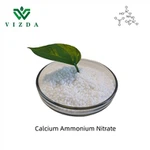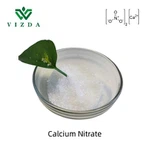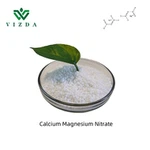Increase The PH Potassium Hydroxide Fertilizer

Formula: KOH
Molar Mass: 56.11 g/mol
Appearance: White solid
Solubility: Highly soluble in water, generating a lot of heat when dissolved
pH: Creates a highly alkaline (basic) solution when mixed with water
Increasing pH in soil is an important task for the growth of plants, and potassium hydroxide fertilizer is a popular way to achieve this goal. In this blog post, we'll explore the benefits of using potassium hydroxide fertilizer and how to properly use it to increase soil pH.
Potassium hydroxide, also known as KOH, is a water-soluble compound that is made up of potassium, hydrogen, and oxygen. It's commonly used for various purposes, such as cleaning agents, soap-making, and even food production. In horticulture, KOH is regarded as an effective alkaline agent for raising soil pH levels.
Benefits of Potassium Hydroxide Fertilizer :
1. Potassium hydroxide fertilizer can help balance soil pH levels that have become too acidic. Acidic soil can hinder plant growth by depriving plants of essential nutrients and minerals. By increasing soil pH, plants can better access and absorb the nutrients they need to thrive. Additionally, Potassium hydroxide also helps preserve soil structure, which can prevent erosion in the long term.
2.Potassium hydroxide fertilizer is beneficial for crops that require specific pH conditions to grow. For example, blueberries thrive in acidic soil with pH levels around 4.5-5.0. By adding KOH, blueberry farmers can better control soil acidity and grow healthier, more vibrant berries.
3. Potassium hydroxide fertilizer can help improve the overall health of plants by regulating soil acidity. When plants don't receive enough nutrients or have to compete with weeds for resources, they can become susceptible to disease and pests. KOH fertilizer can provide plants with the nutrients they need while also deterring weeds and pests.
How to Use Potassium Hydroxide Fertilizer :
To properly use Potassium hydroxide fertilizer, it's important to follow a few key steps.
First, test the soil pH level to determine whether adding Potassium hydroxide is necessary. Most plants prefer soil pH levels between 6.0-7.0, so if the pH level falls below this range, adding KOH fertilizer can help raise it.
Next, measure out the correct amount of potassium hydroxide based on the recommendations on the package label. It's important not to overapply Potassium hydroxide as this can lead to soil toxicity and damage plant roots.
Lastly, work the Potassium hydroxide fertilizer into the soil around plant roots, being careful not to disturb the plants themselves. Water the area thoroughly after application to ensure the Potassium hydroxide is well-distributed throughout the soil.
In conclusion, potassium hydroxide fertilizer is a valuable tool for gardeners and farmers looking to increase soil pH levels. By following the proper guidelines for use, Potassium hydroxide can help plants absorb essential nutrients, deter weeds and pests, and promote overall plant health.
| COMPONENT | SPECIFICATIONS |
| KOH %≥ | 48.0 |
| Chloride (Cl) %≤ | 0.002 |
| KClO3%≤ | 0.005 |
| Fe%≤ | 0.0002 |
| Na %≤ | 0.4 |
| Al %≤ | 0.0005 |
| Pb%≤ | 0.001 |
Packing : 25 kg neutral bag, jumble bag, or IBC drum.

Storage Location:
Dry Environment: Keep it in a cool, dry, well-ventilated area to prevent moisture absorption.
Away from Acids: KOH should be stored away from acids, as it can react violently with acidic substances.
Temperature: Store at room temperature and avoid exposing it to extreme heat, which may increase the chances of reactions.
Hot Tags: increase the ph potassium hydroxide fertilizer, China increase the ph potassium hydroxide fertilizer manufacturers, suppliers, factory, best inositol supplement powder, potassium dihydrogen phosphate dihydrate, Colorless And Transparent Magnesium Sulfate Heptahydrate, Industry Grade Sodium Nitrate, potassium fulvate powder, Potassium Humate
You Might Also Like
Send Inquiry















